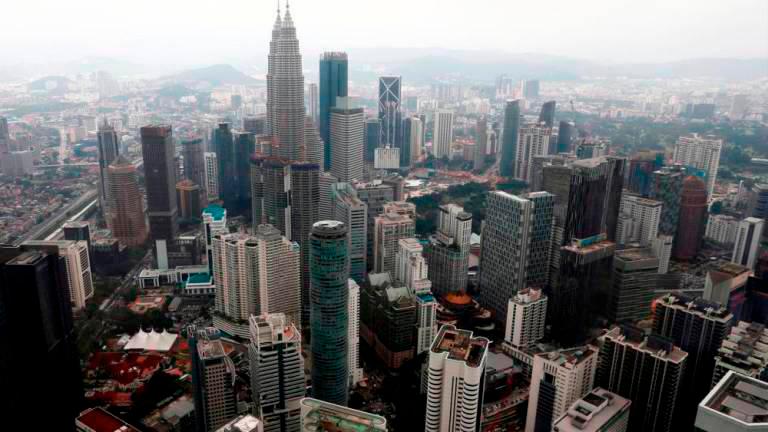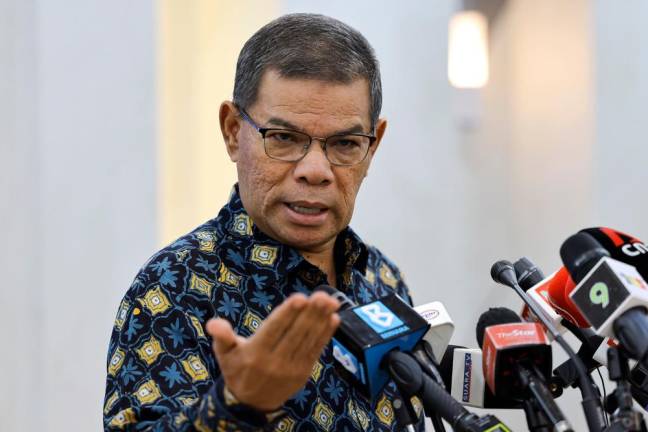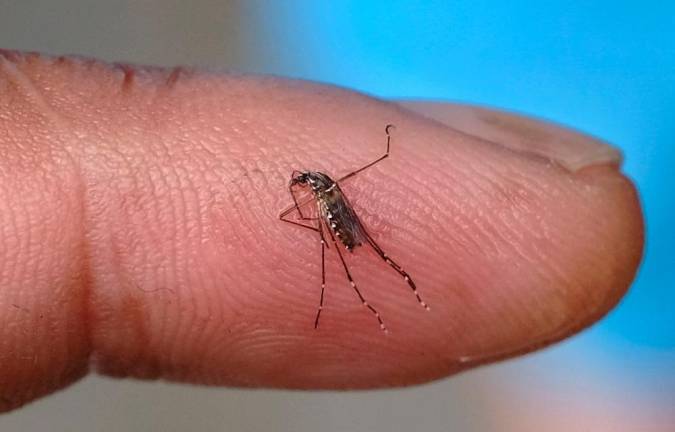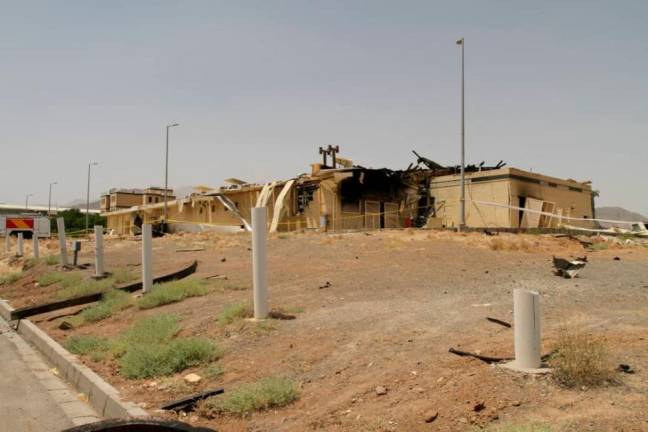KUALA LUMPUR: “Superstar K-Pop Group BTS Effect” to South Korea’s economy worth over US$3.6 billion speaks for itself -- that it is not always about tools, outputs and machines. The creative industry has all it takes to enkindle income to the country, provided it is well tapped.
Back home, this industry is seen as “nice to have” rather than “need to have”.
Its contribution remains dismal at about 2.0 per cent to the gross domestic product in the last five years.
It is not because we lacked talents.
Malaysia’s singer/songwriter Yuna, actor Chew Kin Wah, who is now making his acting career in Indonesia, actress Tan Sri Michelle Yeoh or even painter/poet Latiff Mohidin, whose “blue-chip” works are highly sought after by art collectors, are hard evidence and just the tip of the iceberg.
Malaysian talents are sourced for various digital and technology-related industries, especially in the international film industry, thanks to efforts by agencies like the Malaysia Digital Economy Corporation (MDEC).
But it could have been better with more robust policies and funding, especially during the current trying times that has affected sectors across the board, including the creative industry.
According to the Cultural Economy Development Agency (Cendana), 93 per cent of Malaysian artists and cultural workers have been negatively impacted by the pandemic, with 70 per cent having lost all or most of their income.
Rebooting the creative industry
Despite talks urging the government to help increase the contribution of the creative industry to the economy over the past years, more efforts are needed to make the local environment more conducive for arts.
It is time to rethink the government strategies to boost the creative industry further, stressed festival director Joe Sidek at the inaugural Creative Economy 2021 Forum in early October, held in conjunction with the Budget 2021 preparation process.
The forum was organised by MyCreative Ventures Sdn Bhd, a government’s investment arm to spur the creative industry.
Joe said the creative industry had never been given the chance to chart its own development and called for the need to be given the space to grow.
“Cut Citrawarna. That is the first thing you have to do. What is really interesting now is, because of Covid-19, all government agencies are having talks, dialogues and discourse (and) I think that the government should rethink, do a little report card about the performance over the last 30 years of arts and culture. We really have spent so much money on it,“ said Joe.
Citrawarna is an annual festival organised by the Ministry of Tourism, Arts and Culture (MOTAC), which incorporates a variety of components, including street performances, dance routines and cultural representations.
“We have been (treated) like ‘anak angkat’ (adopted children) of the Tourism (Ministry), Youth and Sports (Ministry) but never on our own. We were never given the privilege of our own cultural minister. That may be one of the things that we should look into,” Joe lamented.
Joe, who is a strong advocate of Malaysian arts, said Singapore has established an ecosystem to examine the systemic problem of its creative industry and set up a taxation programme to help the industry.
“Malaysian artists have been reliant on government grants, venting anger when not getting the assistance, whereas Singapore has set up an ecosystem where they look at the systemic problems.
“They look at taxation so that people work really hard to get sponsors on their own without government (help),” he said, adding that the Malaysian government needs to find a structure so that money is not wasted.
Joe noted that there should be an incentive to get more corporations to come in to support the creative industry.
Creative workers under an agency
Echoing Joe, artist Marini Ramlan stressed the need to streamline the creative industry, which currently is scattered under different ministries, to under just one agency.
“I also feel that we are everywhere, in terms of the artists and the creatives. They exist in every area. If only we can have one whole creative industry like one agency that represents everybody’s best interest in every capacity, from arts to video, because that is what a creative person is.
“It is no longer just a fine artist, there are so many special effect guys and videographers. Right now, it just feels very confusing and diluted,” said Marini, who is a self-taught painter.
She noted that Corporate Malaysia could do more to help the creative industry to thrive.
“A lot of funding I find from the corporates are usually under research and development, as well as marketing funds. I think that they should be incentivised to at least once a year to do a creative project because they need their creative injection too,“ Marini said
Private-Industry collaboration
If arts is indeed the soul of the nation, what are we doing to develop and promote it? How can corporate participation in the arts be increased so that the agents in the ecosystem can have a more equitable role in the bedrock of our country?
Art patronage among Corporate Malaysia and Bank Negara Malaysia is gaining momentum over the years with major artworks within their stable of collection.
Corporate Malaysia has also established a foundation to manage funding and collaboration with art practitioners and non-governmental organisations to revive the arts scene.
Many initiatives were already implemented by the private sector such as KathaKata by Maybank Foundation, and curated in collaboration with a cultural organisation, PUSAKA.
In 2018, Maybank Foundation has disbursed RM524,000 for the arts and culture segment.
Meanwhile, the philanthropic arm of Sime Darby Bhd, Sime Darby Plantation Bhd and Sime Darby Property Bhd, namely Yayasan Sime Darby is another effort taken by the private sector to help the creative industry, among others.
The foundation has contributed a total of RM27.95 million since 2009 to the industry for connecting opportunities for arts and culture, as well as supported 309 artists and trained 20,893 individuals through capability-building initiatives since 2010.
The exercise of sustainable investment in the creative industry also falls under the category of environment, social and governance (ESG), which is aligned to the United Nations’ Sustainable Development Goals.
Sustainable investing is considered an umbrella term for investments that seeks both adequate financial returns, as well as a long-term positive impact on the community and environment.
The rationale behind it is that these goals will, in turn, contribute to safeguarding cultural heritage and nurturing creativity.
Continuous engagements between the private sector and the creative industry are needed to boost the industry further, and for the creative industry to be less reliant on government grants and funding.
The creative practitioners and Corporate Malaysia also would want to sit together and negotiate a win-win situation that will benefit both.
Contribution of creative industry to the GDP
According to Department of Statistics Malaysia chief statistician Datuk Seri Dr Uzir Mahidin, the country’s creative industry contribution towards the GDP stands at 2.0 per cent for the last five years, and currently employs around one million people.
There is a lot of catching up to do when we see our neighbouring countries showing contribution of 5.0 per cent to 7.0 per cent to GDP. Surely there must be something that can be done to increase the 2.0 per cent contribution to a more dignified number.
According to MyCreative Ventures Sdn Bhd, there are three critical areas that need attention in order to break free from a stagnant or worse, deteriorating state of the industry.
The critical areas are capital injection for economic growth; wide-spreading of sales and marketing channels; and infrastructure enhancement for development, production and distribution activities.
Capital injection requires a pool of financial sources. It is the fuel to the economy. The main sources of funds are typically government grants, private money, banks and equity investors.
The creative industry is an epitome of a high-risk industry due to the uncertainty in the revenue potential for the industry.
For this reason, banks, venture capitalists and private equity investors shy away from the creative industry businesses, given the uncertainty in the revenue potential for the industry.
Creative economy during Covid-19 era
This is where MyCreative comes in. The government’s investment arm was established in September 2012 with the aim of spurring the creative industry via strategic funding through debt or equity investments in Malaysia’s creative companies.
About RM200 million was allocated under Budget 2012 (repeat 2012) to help boost the creative industry’s significance to the country’s economy.
MyCreative, which includes Cendana, was also given the mandate to implement and carry out the PENJANA Plan for the Creative Industries, via a variety of schemes and initiatives such as Live Event Grants, and the Digital Velocity Programmes, comprising digital marketing and promotional training, connectivity assistance and advisory services.
Under the proposed Budget 2021, the government is allocating RM15 million to Cendana to implement various arts and cultural programmes that will benefit more than 5,000 arts and cultural practitioners, and behind-the-scenes production crew.
However, film and television producers, the biggest earners in the creative industry, lamented at being “left out” and that the RM15 million allocation is not impactful to the industry. -Bernama














